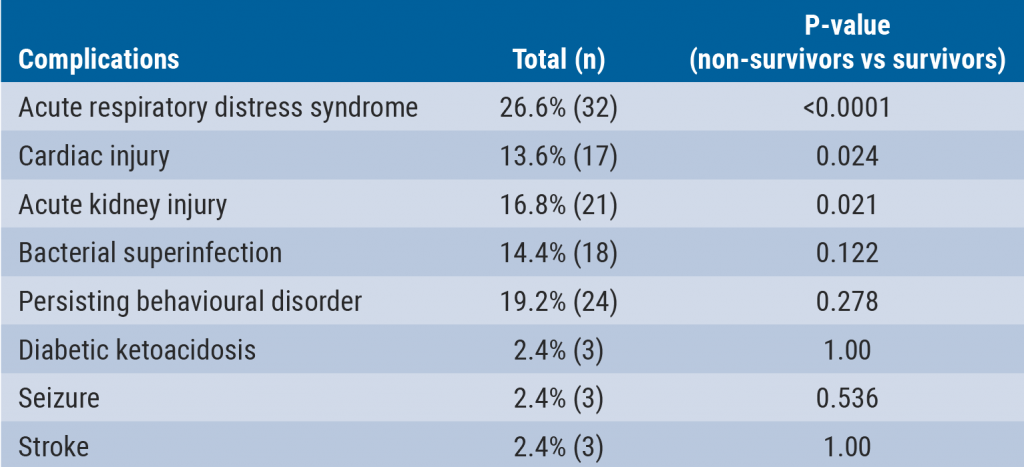The auto-antigen and effector mechanisms of MG are well defined, but the cellular and molecular drivers of this auto-immune disease remain elusive. Dr Bettina Schreiner (University of Zürich, Switzerland) presented a study which employed high-dimensional single-cell mass and flow cytometry in a cohort of mainly newly diagnosed MG patients in order to:
- screen the peripheral blood for an MG disease signature;
- identify map correlations between immune clusters and MG severity; and
- create a leukocyte map of the diseased thymus [1].
B-cell frequencies were found to be highly increased in the inflamed thymus, but not in the peripheral blood of MG patients. A comprehensive immune map identified a decrease of inflammatory circulating memory T-helper subsets such as ThGM and ThCD103 cells that migrated to the inflamed thymus. Circulatory TNF-producing ThCD103 cells populated the diseased thymus, were reduced in the blood of MG patients, and were strongly inversely correlated with clinical disease severity of MG patients.
After surgical removal of the thymus, both of these signature T-helper subsets seemed to rebound in the blood –underlining their role as cellular markers of disease activity– and were effectively targeted by azathioprine treatment.
- Ingelfinger F, et al. Single-cell profiling of myasthenia gravis identifies a pathogenic T cell signature. OPR-209, EAN 2021 Virtual Congress, 19–22 June.
Copyright ©2021 Medicom Medical Publishers
Posted on
Previous Article
« Neural base of persistent hyposmia after COVID-19 Next Article
Prenatal valproate exposure increases risk of adverse neurodevelopmental outcome »
« Neural base of persistent hyposmia after COVID-19 Next Article
Prenatal valproate exposure increases risk of adverse neurodevelopmental outcome »
Table of Contents: EAN 2021
Featured articles
Letter from the Editor
COVID-19
First evidence of brainstem involvement in COVID-19
Cognitive/behavioural alterations persistent after COVID-19
Neural base of persistent hyposmia after COVID-19
Neurological symptoms and complications of COVID-19 affect outcomes
Cerebrovascular Disease
Intracerebral haemorrhage only slightly increases mortality in COVID-19 patients
Stroke with covert brain infarction indicates high vascular risk
Expanding precision medicine to stroke care
Dexamethasone not indicated for chronic subdural haematoma
Cognitive Impairment and Dementia
Severe outcomes of COVID-19 in patients with dementia
Promising diagnostic accuracy of plasma GFAP
Sex modulates effect of cognitive reserve on subjective cognitive decline
Hypersensitivity to uncertainty in subjective cognitive decline
Epilepsy
Minimally invasive device to detect focal seizure activity
‘Mozart effect’ in epilepsy: why Mozart tops Haydn
Migraine and Headache
Factors associated with decreased migraine attack risk
Pregnant migraine patients at higher risk of complications
Occipital nerve stimulation in drug-resistant cluster headache
Rhythmicity in primary headache disorders
Multiple Sclerosis and NMOSD
Typing behaviour to remotely monitor clinical MS status
Alemtuzumab in treatment-naïve patients with aggressive MS
No higher early MS relapse frequency after stopping ponesimod
Good long-term safety and efficacy of inebilizumab in NMOSD
Neuromuscular Disorders
Inability to recognise disgust as first cognitive symptom of ALS
Pathogenic T-cell signature identified in myasthenia gravis
Parkinson’s Disease
Levodopa-carbidopa intestinal gel in patients with advanced PD
New Frontier – Navigated Transcranial Ultrasound
Exploring the possibilities
Related Articles
August 18, 2021
Factors associated with decreased migraine attack risk

August 18, 2021
Severe outcomes of COVID-19 in patients with dementia
August 18, 2021
Dexamethasone not indicated for chronic subdural haematoma
© 2024 Medicom Medical Publishers. All rights reserved. Terms and Conditions | Privacy Policy

